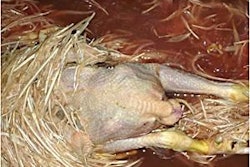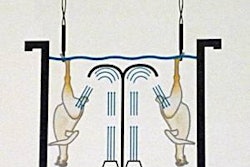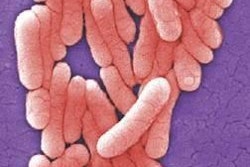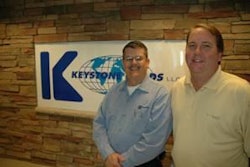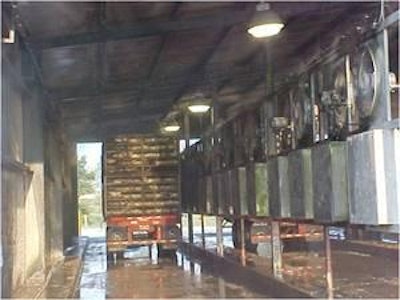
In all processing plants, the most important driver for reducing cost is yield. Maximizing yield and yield value is the difference between average and outstanding returns and, in some cases, making a profit or losing money.
Product costs are driven by dollars and volume. Increased yield will drive down the costs of salable product and increase volume without additional raw material cost, labor expense or overhead cost. From a plant standpoint, yield is the most important number that affects the bottom line.
If conducted properly, the procedures outlined in this article will increase product yield.
It is important to remember that a great plant yield will always start with a good live product from the farm. Most of the costs of the salable product are already in the birds at this point. The plant's responsibility is to convert the potential of the live bird into high quality products at the lowest possible cost.
Poultry plants today span a wide range of automation levels, yet regardless of the level of automation and product mix, there are three basic process steps which are common with all operations:
- Holding shed/hanging area
- Kill/bleed area
- Scald/pick process
Holding shed and hanging area
Minimizing holding times and providing proper holding areas for live birds waiting to be slaughtered are necessary to reduce thermal stress and provide proper bird welfare. Holding times should be part of a comprehensive plan that considers feed and water withdrawal, catch and transport times. The best results are those that have the shortest holding time, usually two hours or less.
Trials have shown that 40 percent of all dead-on-arrivals are from thermal stress, including the time of transport and the holding time at the plant. This number should be 0.25 percent or less.
Live shrink is the amount of body weight that live birds will lose from the time they arrive at the plant until they are processed. In many companies, the live shrink number is measured on every load. Trial measurements should be run on individual loads to establish benchmark values of holding time, temperature and the amount of loss. This number will be a good management tool to help develop an effective program in each situation. In an operation with proper logistics, the shrink loss should be under 0.5 percent.
The majority of the poultry processing industry uses one of two main types of holding concepts:
The lairage-type holding areas maintain a controlled temperature and good ventilation, and uses restrictive lighting, which helps to keep the birds calm.
The holding shed concept can also provide excellent results. A well-designed shed has high-speed fans located to blow through the coops or cages to remove heat. These fans should be turned on once the temperature reaches 21C (70F). The shed will also need a water atomizer system for use when temperatures reach 27C (80F). Remember, the goal of this area is to keep the birds comfortable.
Unloading and hanging
The unloading and hanging operation not only dictates the efficiency of the kill operation but, if not done properly, will cause problems and yield loss throughout the operation.
It is critical to have a consistent supply of birds to the hanging area to keep the line full. Empty shackles on the kill line could result in empty shackles in the evisceration line, causing more misfeeds and difficulty setting the timing on all the automated equipment.
If using a coop system, care must be taken to load the conveyor without dropping or throwing the coops, which causes bruising. With the cage and dumping systems, and the belts should be set at speeds to keep a steady supply of birds without dumping birds on top of each other or causing piling up and smothering at the end of the hanging belt.
A proper hanging area is darkened and not illuminated with ultraviolet light to keep the birds calm. The shackles must be at the right height and distance in relation to the belt and hanger personnel. It is also very important to have the right gauge of the shackle loops to best match the bird size you are running to prevent damage to the feet.
Another aspect is the training of the personnel who hang the birds. This must include the proper way to hold and handle the birds to help prevent drum bruises and disjointed thighs.
A breast rub prevents the birds from climbing the back of the shackles and flapping their wings, causing bruises and red wings. Another breast rub should start at the end of the hanging area and continue all the way to the stunner.
Killing and bleeding
The kill and bleed step, in some form, is also common to all operations. The aim is to slaughter the bird in a humane manner and remove the blood from the carcass. Achieving this without damage or downgrade to the bird is the challenge.
The most common kill process used worldwide is the system using electrical stunning and an automatic kill machine. When using the electrical stunner process there are two options that are widely employed.
The U.S. model uses lower voltage and frequency to produce 20 to 40 milliamps per bird. This has proven to be animal welfare friendly and does minimal damage and downgrade to the birds when operated properly.
The second model uses a non-recoverable stun approach that produces a much higher milliamp per bird—100 at present. This system is very effective from an animal welfare standpoint. However, the increase in voltage has increased the amount of damage to the bird. The animal welfare aspects of both systems are deemed acceptable.
The other stunning option that is available is controlled atmosphere stunning. This includes both chemical types that replace oxygen and systems that remove the oxygen from the birds by mechanical means. The controlled atmosphere stunning systems all do a non-recoverable stun and achieve a uniform stun of all birds in a flock regardless of size. The system provides a much better environment and ergonomic work situation for the live hangers.
The controlled atmosphere stunning systems also have some big disadvantages, however, including identification of dead-on-arrivals and an increase in wing damage. They are much more expensive to buy and operate, and require increased handling and transport safety concerns.
After the birds are stunned the type of kill cut you use should dictate your bleed time. Not enough bleed time will result in birds possibly entering the scalder alive and excess blood left in the product with a resultant reddish color to the skin. Too much bleed time will result in feathers being more difficult to remove and yield loss.
A good rule of thumb is that a cut that severs both carotid arteries and both jugular veins as well as the windpipe will bleed out in 90 seconds. A cut to the side of the neck or back of the head severing only one vein and one artery will require 120-150 seconds to bleed out properly. Before entering the scalder, the birds should have their wings and neck relaxed and there should be no bird movement.
If this is not the case, the bleed time will be too short. If these bird conditions exist much earlier in the blood tunnel before the birds reach the scalder, the bleed time is too long causing picking, or feather plucking, issues and yield loss.
Scalding and picking
The next area common to all operations is scalding and picking. This is truly an area of the plant operation where success or failure is measured by small increments and with exacting detail. A half-degree difference in scald temperature can mean a huge yield loss or gain.
The scalder must maintain good agitation to wet the feathers completely. If the scalder temperature is set too hot—to ensure 100 percent feather removal—it will result in overscald and partial cooking with discoloration of the breast meat.
Adjustment of the pickers at every flock change has to be done properly to allow correct picker set-up. There must be enough picking power and the proper picking finger selection for the product mix of the batch. A key consideration is that the pickers cannot be adjusted to pick 100 percent of the feathers, but must be set to the largest birds in the flock being run. Because of this, a small percentage of the birds will have a feather or two left on them. These feathers must be removed manually further down-stream in the process.
Scalding and picking systems should be selected based on the processing plant's product requirements. In plants that are producing a soft scald, retaining cuticle on the product is more successful with longer scalder dwell times; up to three minutes at lower scald temperatures; usually between 49C and 53C. This system also needs more pickers on line to target specific areas of the bird. In some cases it is also necessary to use a hock steamer to remove the yellow from the hock.
Plants that are producing white, cuticle-off birds will usually use two or three-stage multi pass scalders and have less dwell time. They must scald around 51C-55C to denature the cuticle for removal in the pickers. Dwell time in this type of system needs to be 120 seconds.
There are still a lot of single-stage, multipass systems in use and many are doing a good job. A lot of these are running shorter dwell times—as low as 90 seconds—and temperatures up to 56C to break down the cuticle. This type of system must be constantly monitored as it is very sensitive to line speed changes or agitation problems. There is no upward temperature flexibility, and any temperature increases at all could cause major yield loss.
There are many systems that run single-stage, very short dwell times and compensate with higher temperatures. Without exception, all of these plants experience major yield loss from overscalding the breast and destroying the tissue and collagen layers underneath the skin. Heat is the enemy of yield, so always scald with as low of an effective temperature as possible to meet customer expectations.
It is important to remember that the three areas examined here are only the foundation steps. Not only must the procedures above mentioned be followed correctly, but all subsequent steps have to be performed well to maximize yield.


